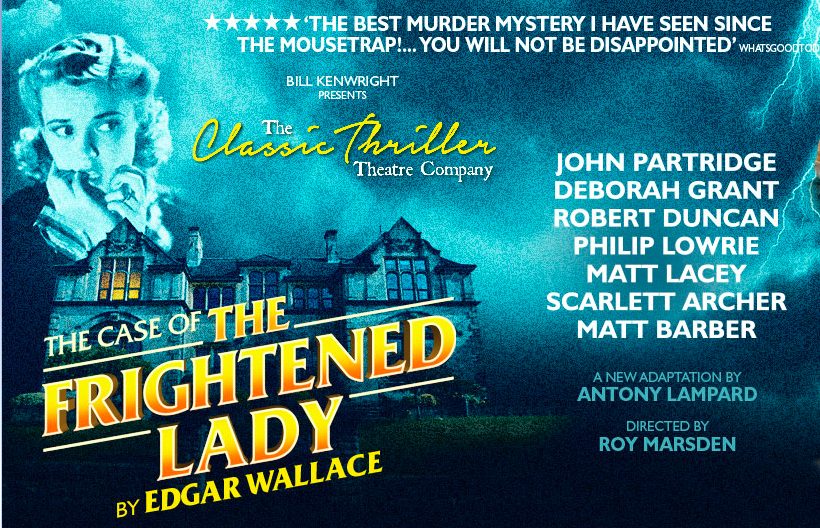The commercial popularity of the murder mystery genre in theatre seems to show no sign of abating and The Case of the Frightened Lady is another example of the familiar whodunit format. Here, the Classic Thriller Theatre Company present an Edgar Wallace play – perhaps lesser well-known to contemporary audiences than Christie or Conan Doyle.
TV and theatre star John Partridge takes the lead role as experienced Inspector Tanner while other recognisable faces such as Philip Lowrie (Coronation Street) and Matt Barber (Downton Abbey) play supporting roles in the 1930s-set mystery. They are joined by seasoned theatre actors Deborah Grant and Robert Duncan who play Lady Lebanon and Dr. Amersham respectively, and the strength of the acting throughout the performance is one of the production’s assets.
The plot centres on the remaining members of the Lebanon family – Lady Lebanon and her son – and some of the employees living and working in their grand family home, Mark’s Priory. We begin, unsurprisingly, with a party, during which the seven or eight key players to and fro about the stage in fancy dress celebrating and drinking. Of course, the prologue climaxes with the off-stage murder of one member of the house. As a result, the inspectors arrive and everyone is a suspect.
As the investigation is carried out, various character relationships are fleshed out and secrets unfold. Plot threads of particular interest to the audience include Lady Lebanon’s obsession with the family line, the maid’s illicit relationship with the murder victim, and the gamekeeper’s shaky account of his whereabouts on the night of the crime. Surmising the difference between red herrings and genuine clues is where the fun is drawn for the audience.
The first act is the weaker of the two halves, as some scenes are very dialogue-heavy – with detailed backstories and historical recounts from various characters crammed in. It’s during the play’s second act where the suspense really builds, as more telling pieces of information are fed to us and the on-stage antics become more fraught and physical. The staging is convincing enough – a foyer area in the stately home – but the sparse decoration doesn’t provide the actors much to interact with or the audience to be absorbed by. The lighting too does its job without much call for anything particularly special bar a few lightning crashes and blackouts. Glasgow’s Theatre Royal does seem to have a faulty spotlight, though, which intermittently flashes on stage. However, it’s a minor distraction; the power of the actors is enough to keep our focus.
The Case of the Frightened Lady, then, is much what you’d expect from the genre. It fulfils the tropes of the murder mystery structure and creates plenty of intermission chatter and speculation about the villain of the piece. There’s nothing groundbreaking or aesthetically significant here, but the typical crowd for a production of this nature likely won’t care. They just want to solve the mystery and figure out the murderer before anyone else!
